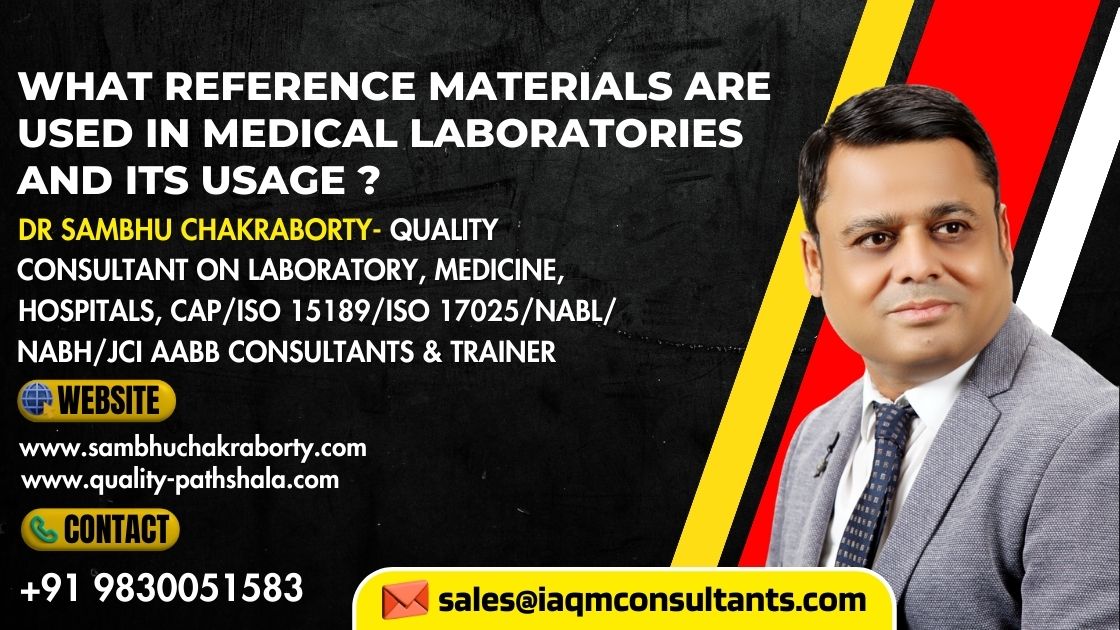Reference materials are well-characterized substances or materials with known properties that are used as a benchmark or standard in medical laboratories. These materials play a crucial role in ensuring the accuracy, reliability, and comparability of laboratory test results. They are used to calibrate instruments, validate methods, assess accuracy, and provide a basis for quality control. Here are some common types of reference materials used in medical laboratories and their usage
- Calibration Standards: Calibration standards are reference materials used to calibrate instruments and establish a measurement scale. They have known properties that allow laboratories to set accurate measurement units on their instruments. Calibration standards are particularly important for maintaining traceability to international measurement standards.
- Usage: Laboratories use calibration standards to adjust instrument settings to ensure accurate and consistent measurements. For example, a laboratory might use a known concentration of a substance (e.g., glucose) to calibrate a spectrophotometer used for clinical chemistry testing.
- Quality Control Materials: Quality control (QC) materials are reference materials used to monitor the accuracy and precision of laboratory testing methods. They mimic patient samples and are used to assess the performance of instruments and testing processes.
- Usage: QC materials are run alongside patient samples to ensure that the testing process is operating within acceptable limits. Deviations from expected QC results can trigger investigations into potential issues with the testing process.
- Certified Reference Materials (CRMs): CRMs are reference materials that have been certified by a recognized authority to have specific properties within certain limits of uncertainty. They are used for calibrating instruments, validating methods, and ensuring traceability
- Usage: CRMs are used to verify the accuracy of measurement methods. Laboratories can compare their results against the certified values to ensure their methods are producing reliable results.
- External Quality Assessment (EQA) Materials: EQA materials are reference materials distributed by external organizations to laboratories participating in proficiency testing programs. These materials are used to assess a laboratory’s performance compared to other laboratories.
- Usage: Laboratories test EQA materials as part of proficiency testing programs to evaluate their accuracy and precision against other laboratories. This helps identify potential areas for improvement.
- Matrix Materials: These materials replicate the composition and properties of patient samples. They are used to ensure that a laboratory’s testing methods perform accurately within a specific sample matrix
- Secondary Reference Materials: These materials are derived from higher-level reference materials and are used to transfer the accuracy of measurements from primary standards to routine laboratory testing materials
- Usage: Secondary reference materials serve as intermediary standards to ensure traceability in laboratories where access to primary reference materials is limited.
Reference materials are essential for establishing the accuracy and reliability of laboratory test results. They enable laboratories to maintain standardized measurement practices, monitor instrument performance, and ensure comparability of results across different laboratories and over time.
About the author
Dr. Sambhu Chakraborty is a distinguished consultant in quality accreditation for laboratories and hospitals. With a leadership portfolio that includes directorial roles in two laboratory organizations and a consulting firm, as well as chairmanship in a prominent laboratory organization, Dr. Chakraborty is a respected voice in the field. For further engagement or inquiries, Dr. Chakraborty can be contacted through email at director@iaqmconsultants.com and info@sambhuchakraborty.com. Additional resourcesand contact information are available on his websites, https://www.quality-pathshala.com and https://www.sambhuchakraborty.com, or via WhatsApp at +919830051583

Great blog!
Can we use controls as calibrator? Why?